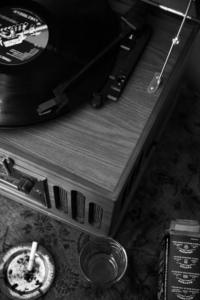
I wanted one thing when I graduated eighth grade—a digital single-lens reflex, or DSLR, camera. Both of my grandmothers planned to collaborate on the gift, so I felt certain my photography career would soon begin. At first glance I adored the black Nikon Coolpix L120, but upon further inspection I realized they bought me a point-and-shoot camera, void of the settings or capabilities I fantasized about learning to use.
The type of camera I wanted was too expensive, my parents said.
Success in photography, filmmaking, painting, and countless other forms of visual art are dependent on the tools an artist can access. You can’t paint like Claude Monet using a toothbrush and food coloring, and you can’t shoot like Annie Leibovitz using a point-and-shoot or an Android manufactured in 2011. Young artists that lack financial means to purchase expensive equipment and software should not allow these challenges to discourage them from pursuing their passions.
For years, I looked at high-resolution photos of white girls sitting in sunflower fields with envy, taken by kids my age who could afford professional cameras and pricey editing software. I promise I am not ungrateful—believe me when I say I tried to work with the tools I had handy. My photos didn’t look anything like those that inspired me to pursue the medium. There was something off about my images that I could not identify. When the time to upgrade to a smartphone arrived, I made a regrettable decision to purchase an Android phone equipped with a grainy, blurry camera that also produced unsatisfactory results. My pictures just looked like pictures, not interesting works of art. Now that I understand how to make a photograph, I realize it was impractical to hold myself to such a high standard.
Digital photos are produced by exposing a camera’s sensor to light. Cell phones and point-and-shoot devices often possess small sensors, which limits the image quality potential. The cheapest DSLR on the market costs $500, with an additional $50 if you want a year of insurance. The average 35mm film cameras cost $50 online—with an additional $3.29 per roll and around $12 to develop each. A subscription to Lightroom and Photoshop costs $10 per month. Additional tripods, lenses, lights, flashes, memory cards, external hard drives, negative carriers, ink, and photo paper all add up. I worked throughout most of high school, but saving this much money felt unattainable as someone earning $7.25 an hour.
I continued to create in the ways I could, but I believed I did not possess whatever artistic gene allowed local skater boys to take such sharp portraits of their cute friends. I found my grandmother’s 35mm point–and–shoot and tried to start making art, but the camera would stop working in the middle of the roll every time. Those rolls still sit on my dresser because I couldn’t afford to develop them, but I still enjoyed every moment of shooting high school parties and random adventures. I wouldn’t feel satisfied producing half-used rolls today, but I’m glad I kept trying.
Emerson provides students from any socioeconomic background with opportunities to get involved with the photography program. This year, the visual and media arts department allotted each person in the program six rolls of free film—and this is not the only way the college can provide support. By applying for the Student Assistance Fund, students with identified financial need can ask the college to fund a photography minor or Bachelor of Fine Arts degree. Film and developing costs for these classes can run high, but the fund allows the college to purchase the necessary materials for eligible students. Students enrolled in photo classes receive access to the Equipment Distribution Center, where they can check-out a variety of DSLRs, film cameras, tripods, and lights to complete assignments.
As members of an artistic community, we must all contribute to ensuring our spaces are accessible. Make a point to appreciate lo-fi, do-it-yourself art. Expand the Instagram accounts you follow beyond professional, established photographers. Support creators still struggling to figure out how to live as working artists.
Don’t allow perceived aesthetic standards of success to discourage you from pursuing a passion. Rich parents and easy access to the woods provide some with a leg-up in this medium, but these advantages alone do not make an artist. Don’t give up—I promise seeing your first darkroom print sheen in the light will make the struggle worth it. The challenges you face finding the means to execute your visions will make you a versatile, innovative creator capable of facing any adversity.